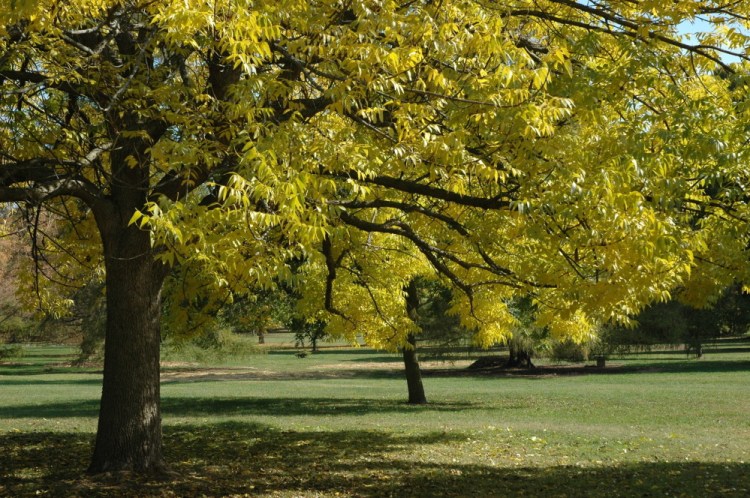NEW YORK — Five prominent species of ash tree in the eastern U.S. have been driven to the brink of extinction from years of lethal attack by a beetle, a scientific group says.
Tens of millions of trees in the U.S. and Canada have already succumbed, and the toll may eventually reach more than 8 billion, the International Union for Conservation of Nature said Thursday.
Ash trees are a major part of eastern forests and urban streets, providing yellow and purplish leaves to the bounty of fall colors. Their timber is used for making furniture and sports equipment such as baseball bats and hockey sticks. In Maine, ash represents about 2 percent of the trees in the state’s 17 million acres of forest, and white ash is commercially valuable for making things like snowshoes and canoe paddles.
The rampage of the emerald ash borer is traced to the late 1990s, when it arrived from Asia in wood used in shipping pallets that showed up in Michigan. Asian trees have evolved defenses against the insect, but the new North American home presented it with vulnerable trees and no natural predators.
“The populations are exploding,” said Murphy Westwood of the Morton Arboretum in Lisle, Illinois. Infestations have been detected in 30 states.
“It’s a very efficient killer,” Westwood said. “As the ash borer moves through a forest, it will completely kill all of the mature ash trees within three or four years.”
The emerald ash borer has not been detected in Maine forests, although a small infestation has appeared in New Hampshire trees, said Dave Struble, the Maine state entomologist. State and federal agencies have set about 1,100 traps for the beetle in Maine, hoping early detection can mitigate or help control its spread.
Westwood led the scientific assessment that resulted in classifying five species as critically endangered – meaning they are facing an extremely high risk of extinction in the wild. The change appears on the IUCN’s Red List, considered by scientists the official index of what animals and plants are in danger of disappearing. The species are the green, black, white, pumpkin and blue ash.
Struble said the white ash has the most commercial value in Maine, but the black ash is important to the Abenaki nation, where it plays a central role in their creation stories and is the primary source of wood for their baskets.
“This issue is very real for them,” said Struble of the impending threat from the emerald ash borer. “If you take a cultural icon out of the landscape, it’s huge.”
A sixth species, the Carolina ash, was put in the less serious category of “endangered” because it might find some refuge from the infestation in the southern part of its range, which includes Florida, Texas and Cuba, Westwood said.
Dan Herms, an entomologist at Ohio State University who studies the ash borer, called it “the most devastating insect ever to invade North American forests.” It’s already the most expensive because it has killed so many urban trees that had to be removed, disposed of and replaced, which has cost billions of dollars, he said.
Herms, who was not involved in the IUCN project, said he’s not sure the ash species will literally disappear. But he said they could become “functionally extinct,” with populations too small to play a significant role in the environment for benefits such as providing shelter and filtering water.
Struble said there are some promising advances in controlling the spread of a borer infestation. He’s hopeful that those methods will be ready for implementation if the beetle gets to Maine.
“What we’re doing is buying time,” he said. “That’s our big hope – that there will be a tool or series of tools to protect our trees at some level.”
Press Herald Business Editor Carol Coultas contributed to this report.
Send questions/comments to the editors.


